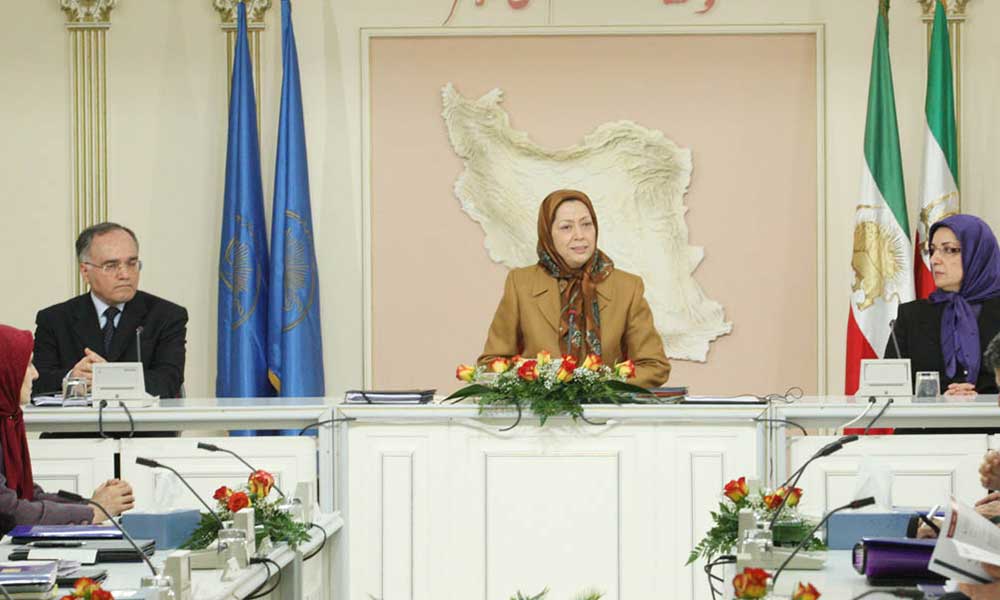Biannual session of the National Council of Resistance of Iran

Mrs. Rajavi lauded the protestors’ courageous struggle and unwavering resolve, and particularly the bravery of women who remain at the forefront of the uprising, in their confrontation with the brutal suppression imposed by the Iranian regime. She paid homage to the resistance of political prisoners in the regime’s dungeons and medieval trials, and in the face of threats of execution on charges of “moharebeh” and contacts with the People’s Mojahedin Organization of Iran (PMOI/MEK). She also praised the perseverance of the Iranian people’s brave sons and daughters in Camp Ashraf, which affords the glaring symbol of resistance against the clerical regime.
Mrs. Rajavi emphasized that the blood-spattered and epic perseverance of Iran’s cognizant and selfless activists from Ashraf to Tehran serves as the greatest of testament to the righteousness of the Iranian people’s resistance, and promises the inevitability of triumph for the struggle to achieve freedom and democracy.
She added: As recently as eight months ago, governments and many political actors and experts were convinced of the clerical regime’s stability and did not expect such a volcanic eruption in the Iranian society. The regime’s supporters and collaborators, and those in favor of appeasement and negotiations with it, may still question the strength and duration of the protests, but the uprising’s advance thus far has proven that the situation will not revert back to what it was previously.
Mrs. Rajavi reminded that the Iranian people’s uprising, especially at its awe-inspiring peak on Ashura day with the chants of “death to the principle of velayat-e faqih (absolute clerical rule),” has rattled the entire edifice of the regime, which explains why some in the defeated factions have started to distance themselves from it.
After the President-elect’s remarks, Mr. Reza Olia, an Iranian sculptor and artist in the NCRI, presented a statuette of Neda Agha Soltan to Mrs. Maryam Rajavi. Neda was the young woman who was murdered by the regime’s forces during street protests on June 20, 2009 and became a symbol of the Iranian national uprising.
Over the three-day deliberations, NCRI members discussed the persistence and evolution of the national uprising in Iran since its outset on June 13, 2009, the day after the regime’s sham presidential elections, until December 27 (the bloody uprising of Ashura), as well as developments regarding the perseverance of Ashraf, which has at the same time as the uprising been a target for plots and chain attacks by the clerical regime and its proxies and agents in Iraq. Camp Ashraf, near Baghdad, is home to 3,400 members of the Iranian opposition PMOI.
The NCRI’s session also paid homage and expressed appreciation to the International Committee of Jurists in Defense of Ashraf, the International Committee in Search of Justice, the Arab-Islamic Committee in Defense of Ashraf, the Society of Iraqi Jurists in Defense of Ashraf, and 16 parliamentary committees in as many countries around the world for their admirable positions and support for the safety and security of Ashraf residents.

